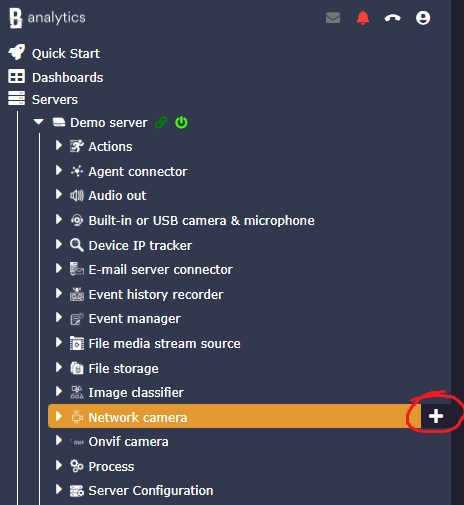In video surveillance systems, the terms "IP camera," "network camera," and "ONVIF camera" are often used interchangeably, but each has distinct meanings. Understanding these differences is important for choosing the right camera for your surveillance system and ensuring smooth integration with your software. Let's break down these terms:
- IP Camera: Refers to any camera that connects to a network using the Internet Protocol (IP) to transmit video and audio data, typically over Ethernet or Wi-Fi.
- Network Camera: This term is used synonymously with IP camera, emphasising the camera's ability to connect to a network for communication.
So, IP Camera and Network Camera are two terms used to refer to the same type of device: a digital video camera that connects to a network for data transmission. The two terms are often used interchangeably, and both describe cameras that rely on the Internet Protocol (IP) to send and receive data over a network, whether that's via Ethernet or Wi-Fi. Some manufacturers or regions may prefer one term over the other.
Some IP cameras may only work with their manufacturer's software and may not be compatible with third-party software or devices, this is not the case for all models. Some manufacturers provide open APIs or support for standard protocols like ONVIF, ensuring seamless interoperability between different brands and models. At Banalytics, we offer a simplified method for working with ONVIF cameras — find out more here. It's essential to check the specifications and compatibility of an IP camera before purchasing, especially if you plan to use it with third-party software.
In this article, we'll guide you through the process of configuring a network camera that doesn't support ONVIF. However, this method can also be applied to configure any ONVIF-compatible camera.

Click the button next to a Network Camera sub-menu under the Banalytics server.
After successfully adding the camera, you can view the live stream, edit the configuration options, and run/stop/delete it.
Clicking the camera, you'll see all camera tasks — capture, add a watermark to the camera view, continuous recording, motion detection, recording upon motion detection, or object classification. Read more about the tasks you can add for a camera here.
Configuration Parameters
| Value | Required (Yes/No) | Description | Default |
|---|---|---|---|
| uuid | Yes | A unique, automatically generated identifier for this component instance. This value is not editable. | |
| Restart on failure | Yes | Restart mode upon catching an error:
|
Default to 10 sec |
| MAC Address | No | The MAC address is a unique identifier for the camera's network interface. You can find it in the camera's web interface or through Network Device Discovery in Banalytics VMS. In some cases, the MAC address is also printed on a sticker on the camera itself or its packaging. This unique address helps distinguish your camera from others on the network. | |
| Title | Yes | Choose a name for the camera to easily identify it within your system (e.g., "Garage Camera"). | |
| URI schema | Yes | The URI (Uniform Resource Identifier) schema is used to access the camera's web interface, control its functions, and retrieve video and audio streams. The format of the URI schema can vary depending on the camera manufacturer and model.
Consult the camera's documentation or search on the Internet for the correct URI schema to use.
Banalytics supports protocols:
|
Default to RTSP |
| Stream format | Yes | The parameter determines the type of video encoding and protocol used to transmit the video feed from your camera to the video management system (VMS). It defines how the video stream is packaged and delivered over the network. Each encoding format has different efficiency levels, with H.265 being the most efficient at compressing video while maintaining quality, ideal for high-definition video. MotionJPEG, on the other hand, is less efficient and is typically used for lower-quality video or specific use cases.
|
Default to RTSP |
| Host and Port | Yes | The IP address (host) and port number are required to establish communication between Banalytics VMS and the camera. You can find the camera's IP address in the camera's documentation or use Network Device Discovery to locate it. The default ONVIF port for HTTP is 80, and for HTTPS, it's 443, but these may vary based on the camera's settings. | |
| Path | Yes | This is the specific resource path for the camera's video stream, such as /video.mjpeg. You can find this path in your camera's documentation or by searching online for the camera model's default settings. | |
| Username and Password | Yes | Username and password for the camera's web interface. If you don't have these, check the camera's documentation, look for a sticker on the camera itself, or check its packaging for default login credentials. If these options don't work, you may need to reset the camera to its factory settings. |
